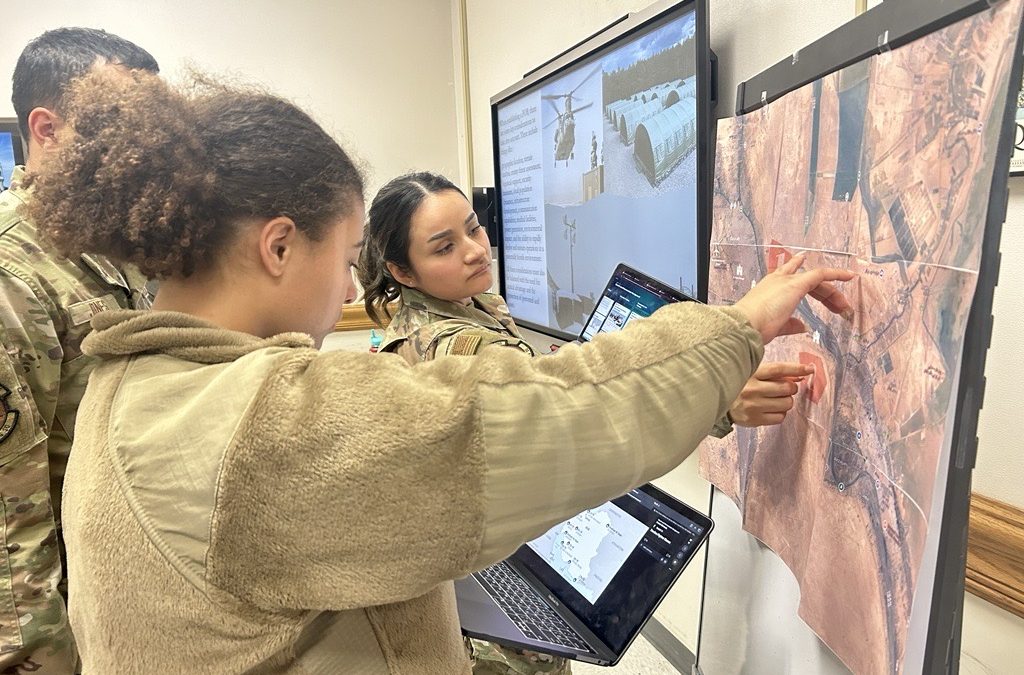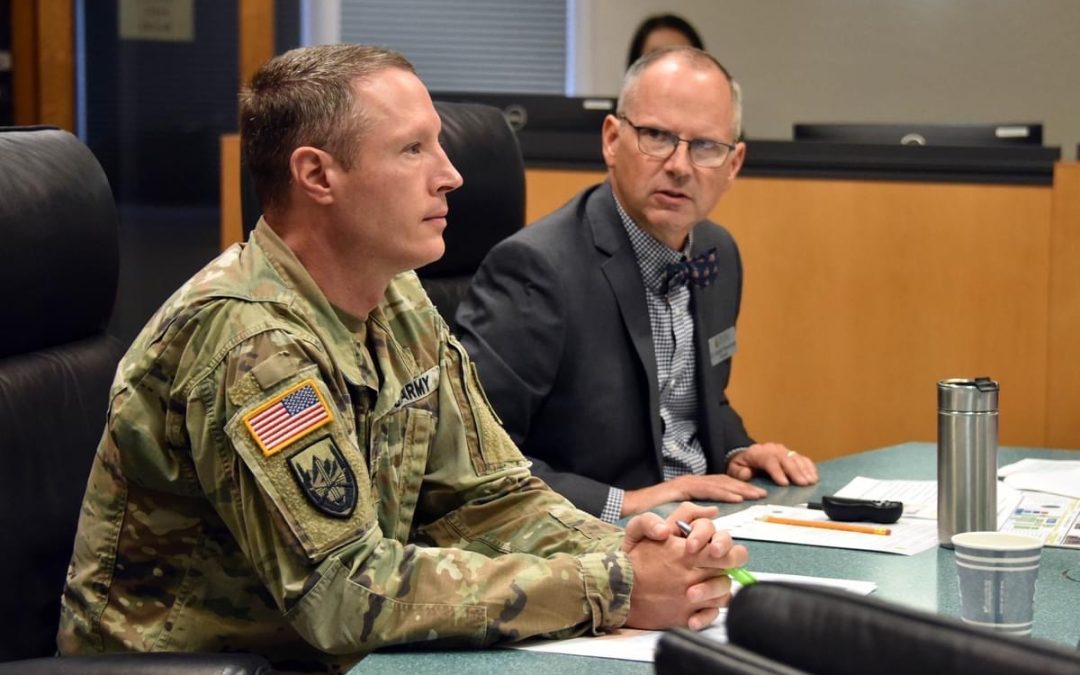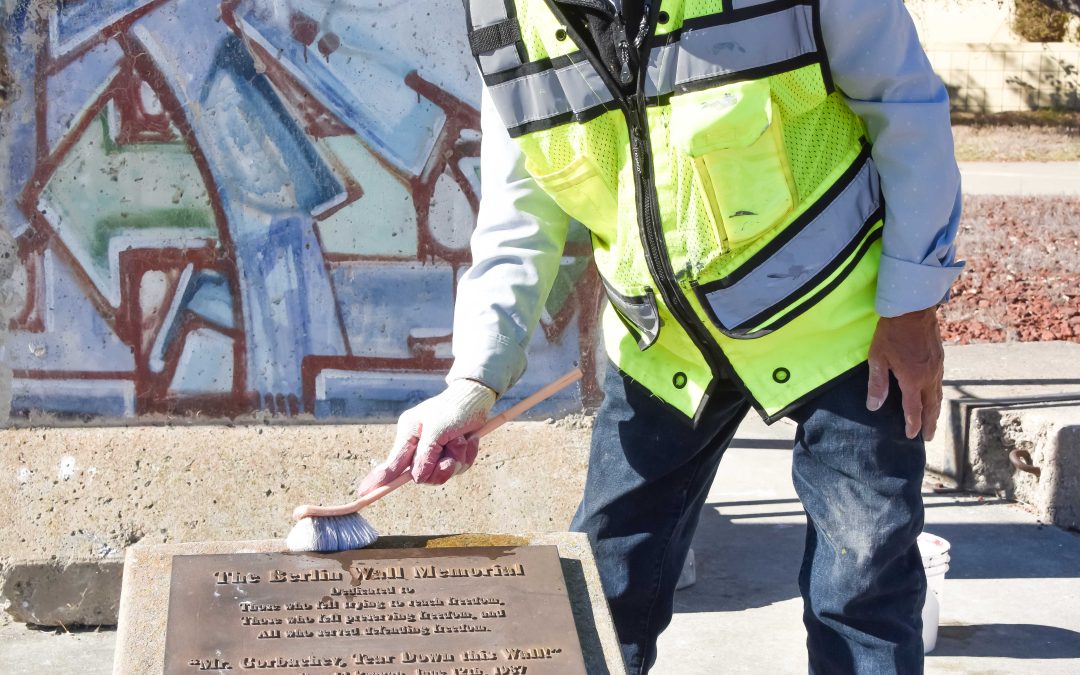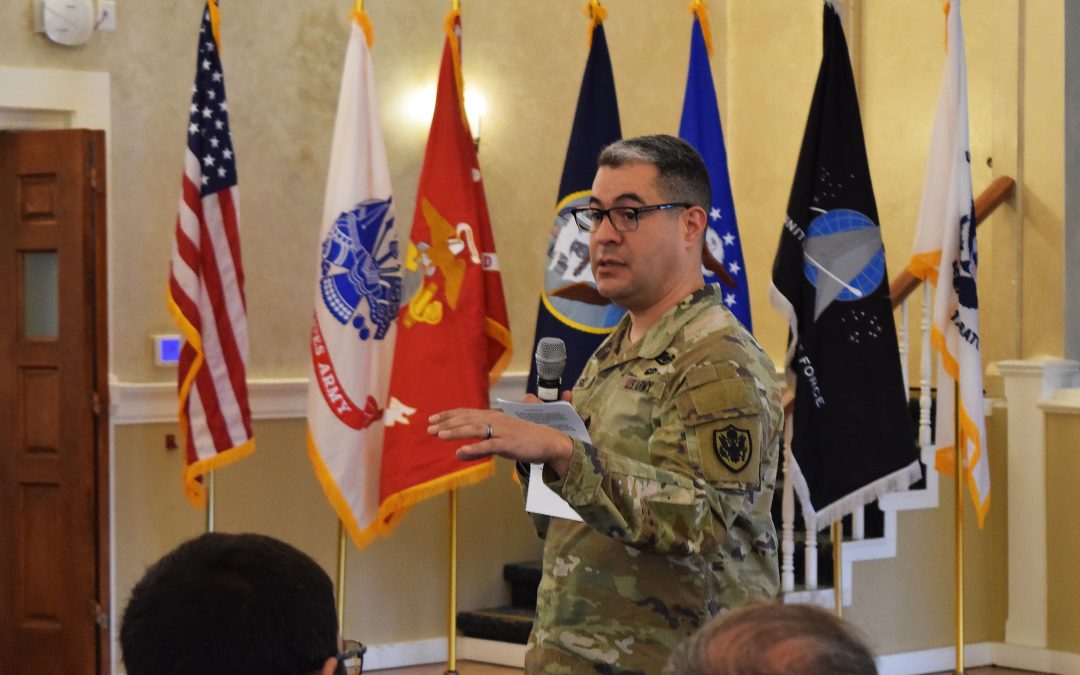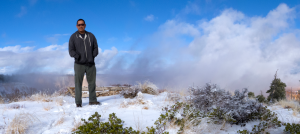
Brian Roanhorse, Visual Information Specialist at the Defense Language Institute Foreign Language Center.
In the heart of the American Southwest where the red sands of Arizona and New Mexico blend into one, Brian Roanhorse has woven a life story that mirrors the rich tapestry of his Native American heritage.
From parachuting out of “perfectly good airplanes” as part of the 82nd Airborne Division to becoming a creative powerhouse of graphic art and computer animation, Roanhorse’s journey from U.S. Army Soldier to government service is a path defined by both deep-rooted tradition and personal transformation.
“I was born on the Navajo reservation,” said Roanhorse, his baritone voice carrying the weight of a legacy that stretches back generations. “My family is part of the Redhouse clan, members of the Navajo Nation. Growing up, my elders used to tell me stories of how hard they’d fought to ensure our continued existence not just as a people, but to hold on to our traditions.”
“I volunteered to be in the same unit [my grandfather] was in, as an Airborne Infantryman for the 82nd Airborne Division,” his choice to join the military was deeply rooted in his own family history. “I’ve tried to honor their perseverance and fighting spirit and that’s one reason I joined the Army.”
Roanhorse’s service was not just an act of patriotism or familial obligation, but a tribute to his heritage, feeling not only the weight of the tradition left by his grandfather, but other Navajo heroes: the Navajo Code Talkers.
During WWII, the U.S. Marines enlisted 29 Navajo men who created an unbreakable code based on their complex and unwritten language. This code, which could be translated into English in just 20 seconds, played a crucial role in Pacific operations, including the battle for Iwo Jima, and remained unbroken even after the war.
“That is a proud legacy among my people and those Marines deserve our admiration,” he stated, acknowledging the complex history and contributions of Native Americans in the armed forces. “[Those men] grew up in a time when most of America looked away from the plight of Native Americas and kept taking and taking. And even after the WWII, they were told to keep quiet about their contribution to the war effort. So they went back home as third-class citizens until they declassified files in the 80’s. But now’s a different time and we celebrate them annually and openly, the way it should be.”
Even his own journey was not without its hurdles. “As I grew up, it was pretty clear joining the military was one of the few ways to advance out of poverty, at least in my case,” Roanhorse admitted. “Living on the reservation for me was a struggle as I grew older.”
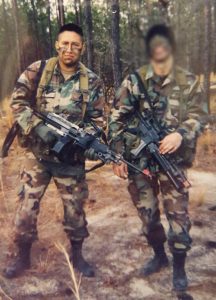
Spc. Roanhorse, circa 1998 training at Ft. Bragg, now Ft. Liberty (the other Soldier’s face blurred for security concerns)
And how did growing up in that environment differ from taking the oath to becoming a Soldier? “I had a huge culture shock, going from the reservation to Army life. I was excited about the adventure, the newness, but most of [what I knew] outside of the reservation was from movies and music. But when I finally experienced this collection of people who were like characters from all the different states, I was enthusiastic to get to know them. Most of them had never met a Native [American Indian] and thought we were unicorns,” he laughed.
Upon fulfilling his initial military commitment, Roanhorse shifted to the reserve forces where he served over 20 years in a variety of jobs and on multiple deployments and made a pivotal change in his professional direction. With support from his G.I. benefits, he pursued a higher education in the arts, a move that paved the way for his evolution into a graphic artist and visual information specialist in the world of government service. In this capacity, Roanhorse expertly merged the rigors of military discipline with artistic vision, carving out a distinctive and rewarding niche that has perfectly balanced his stoic baring and military discipline with unchained artistic expression.
“One benefit of being a government service employee is working with military service members. I already know their ‘language,’ their chain of command, how they think and operate. That synergy’s allowed me to get on the same page very quickly as [the client]. It really helps me make products that are that much closer to their initial vision. Plus, the benefits don’t hurt either,” he said with a wry smile.
As for his Native American heritage, it continues to play a pivotal role in his life and work. When asked about Native American Heritage Month, Roanhorse offers a thoughtful perspective.
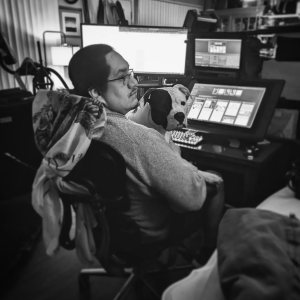 “Every day is a good day to be Indigenous, Native or ‘something else.’ But I won’t lie. When you look back into American history, sometimes it’s hard to stay positive but we need to keep focused on the fact Native Americans have been fighting for this country, and sometimes against it, since the beginning of our history, before there was a United States. And we have always fought for the protection of the land. People, governments, they come and go, but the spirit of the land will always be here.”
“Every day is a good day to be Indigenous, Native or ‘something else.’ But I won’t lie. When you look back into American history, sometimes it’s hard to stay positive but we need to keep focused on the fact Native Americans have been fighting for this country, and sometimes against it, since the beginning of our history, before there was a United States. And we have always fought for the protection of the land. People, governments, they come and go, but the spirit of the land will always be here.”
Looking towards the future, Roanhorse is optimistic about the representation of Native Americans in the military and the arts. He encourages young Native Americans, “You can do both. You can be a Soldier and be an artist. The Army gave me that opportunity. And now with YouTube and all the on-line resources, just absorb as much as you can. Never stop learning. That’s how you grow.”
Today, as Roanhorse reflects on his journey from carrying an M-16A4 to wielding a pen on a tablet, his story is a testament to the enduring spirit of the Native American community: a spirit of resilience, pride and an unwavering commitment to forge new paths while honoring the past. “I am proud to have served and am still serving. Native culture is the DNA of this nation.”

